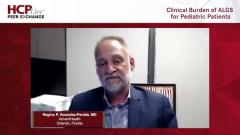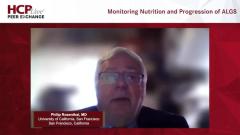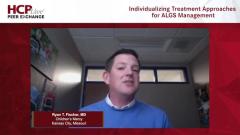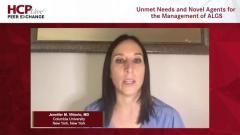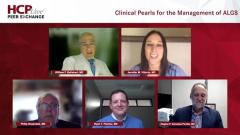
Clinical Presentation of ALGS
Drs Ryan T. Fischer, William Balistreri, and Regino Gonzalez-Peralta comment on the clinical variability in the presentation of Alagille syndrome in patients.
Episodes in this series

William F. Balistreri, MD: I mentioned variability. Ryan, maybe you can dig a little deeper on the variability when the systems manifest, what you’re more likely to see vs your cardiology colleagues, and
the family issue that [Jennifer M. Vittorio, MD,] and I alluded to.
Ryan T. Fischer, MD: This leads into some great new frontiers that we’re seeing, with the genetic testing being not only available but done with accessibility and financial constraints sometimes dropping off, especially now that we’re able to use some of the sponsored testing kits. It’s going to be amazing to see where this goes. Obviously, the variability is very much there.
Preparing for this [discussion], I went back and saw that I had forgotten that the original description of the disease. Before it was given the name Alagille [syndrome, it was called] arteriohepatic dysplasia, focusing on those 2 main features…[seen] most often in [children who have it]. They have bile duct paucity. and those changes that lead to cholestasis. Then they have some of the pulmonic artery stenoses and hypoplasias that can be present there. You can see so many different systems affected, as [Philip Rosenthal, MD] alluded to.
Why do these happen in some [children] and not others? Why do we see these severities differ between [children] and potentially their family members? Being autosomal dominant, many of these [children] can have new mutations in JAG1 or NOTCH, but many of them have received them from parents who otherwise seem unaffected or maybe have 1 or 2 clinical features.
A great example from recently in our clinic is a mother who had tetralogy of Fallot but didn’t have any other known manifestations of Alagille. She has a child [who is one of our patients] who has a known JAG1 mutation. It’s something that we’ve talked about with her and said, “It could be wise to get tested yourself.” I’m not sure exactly how to handle that situation clinically for that person. If she’s been followed by cardiology, do we need to advocate for additional investigations into other things that may be affected? It’s going to be fascinating to see where this goes, to see how much more we learn about this signaling pathway between JAG1 and NOTCH. Perhaps all the other modifying genes that could be there will dictate the expression of this and how severe it might be and allow us to better predict what’s going to happen to these [children] in the future.
William F. Balistreri, MD: Ryan, you bring up a very important point and one of my lessons in life. I hate to tell you how many years ago, but the patient is now 23. [The patient was] a newborn with cholestasis. As I mentioned to Jennifer, I looked across the room and the mother clearly had facies that looked like Alagille syndrome. I felt obligated to mention it to her, which elicited a significant amount of anger. About 2 months later, she called apologizing because she just had a stroke. I still see that patient. I still see the mother. We mended our [differences]. It’s important that we follow up. This is an important multisystem disease. We’ve certainly seen later-onset renal disease.
Are there other comments from the panel? Does anyone want to add an anecdote?
Regino P. Gonzalez-Peralta, MD: You reminded me of a similar situation. Mine was in the clinic. I was called in to evaluate a baby who had cholestasis. Nobody had figured it out. I must have been a senior fellow or maybe an early assistant professor. I walked in the room and this [child] definitely had Alagille syndrome. I looked across the room and there are the mother and grandmother; they are short and have Alagille. Here I am with this baby, and as a young person, I was [thinking], “How do I tell these people that everybody has Alagille syndrome?”
My way of introducing it was to ask, “Does anybody in the family have a heart disease?” Both the mom and grandmother raised their hands quickly. They said, “Yes, we had pulmonic stenosis that was fixed when we were babies.” Of course, that opens up to saying, “You have Alagille,” etc. Those family members didn’t get mad at me. They were thankful that we figured out why they [were] short. That’s what they thought, and nobody had ever said anything. There are a lot of folks out there…with Alagille who [never have received a diagnosis] and have no idea that they have it.
William F. Balistreri, MD: Yes. We collected the data on our families, and there are a number of individuals who have later had adult-onset strokes and renal disease. I agree. We’re obligated to screen family members, [as] with any genetic disease. We’d certainly do it for Wilson disease and others.
TRANSCRIPT EDITED FOR CLARITY
Newsletter
Access practical, evidence-based guidance to support better care for our youngest patients. Join our email list for the latest clinical updates.


